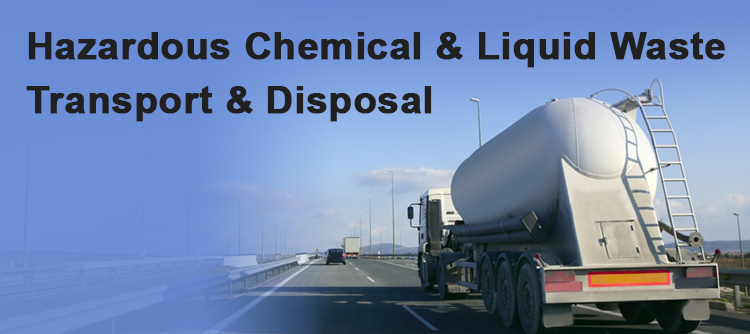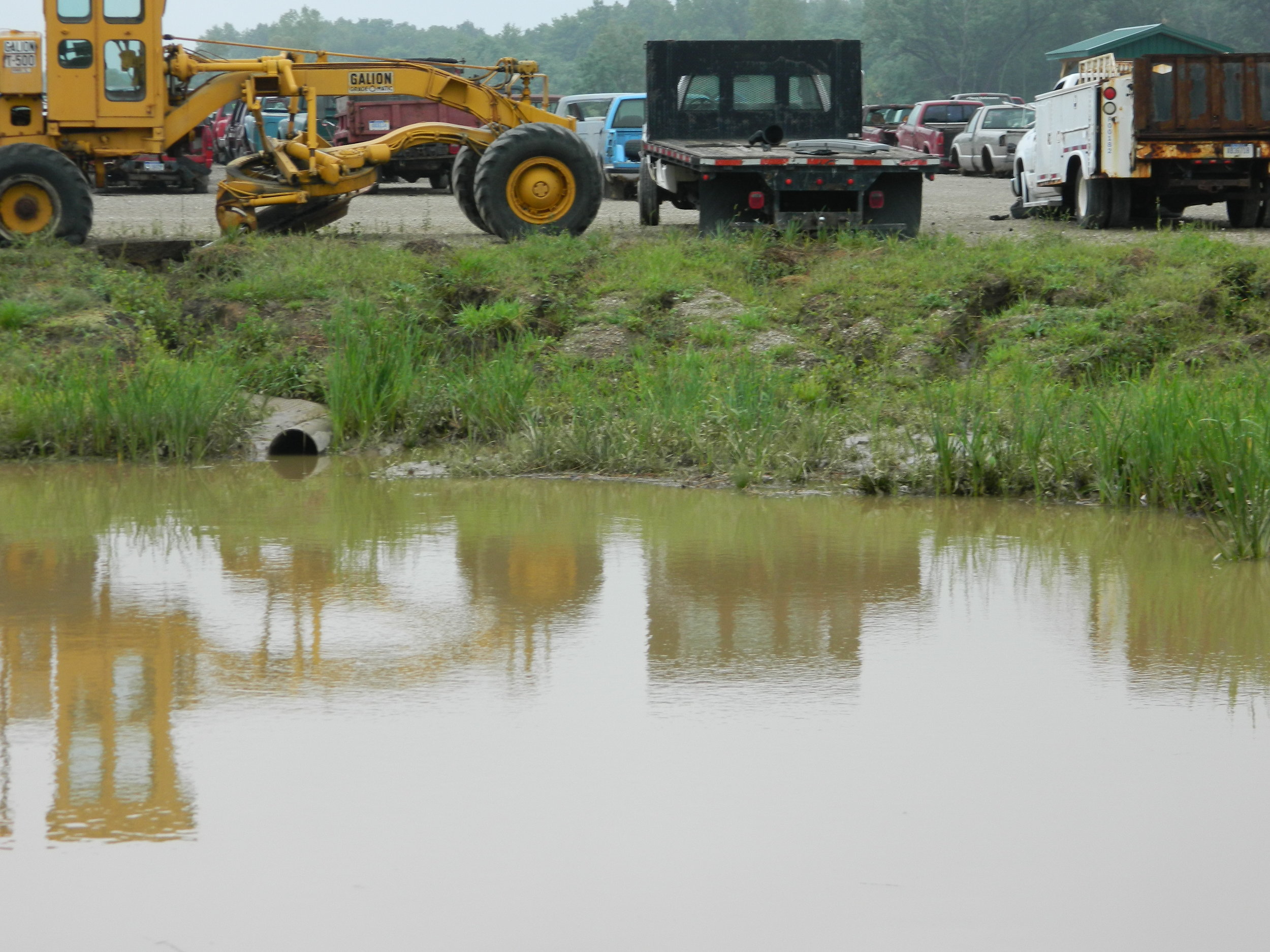How Fluid Garbage Disposal Functions: A Detailed Summary of Techniques and Technologies Used

Review of Liquid Waste Types
The complexity of fluid waste kinds necessitates a complete understanding of their qualities and implications for disposal. Fluid waste can extensively be classified into numerous types, consisting of industrial, community, agricultural, and unsafe waste. Each category displays distinct residential or commercial properties, needing particular administration strategies to minimize ecological and wellness dangers.
Industrial fluid waste stems from manufacturing procedures and frequently includes a variety of impurities, such as hefty steels, solvents, and organic compounds. Metropolitan fluid waste, largely making up wastewater from households and commercial establishments, includes raw material, nutrients, and microorganisms (industrial wastewater treatment). Agricultural liquid waste, including overflow from ranches, might have plant foods, chemicals, and pet waste, positioning threats to water high quality and environments
Harmful liquid waste is identified by its toxicity, sensitivity, or potential to cause harm. This category consists of materials like acids, bases, and certain chemicals that require strict handling and disposal methods. Comprehending these varied fluid waste types is vital for developing effective disposal approaches and ensuring conformity with environmental laws. Correct category and characterization are crucial for carrying out suitable treatment techniques and decreasing the negative effect on public health and wellness and the environment.
Physical Therapy Techniques

Screening is the initial action, where bigger particles and particles are eliminated from the liquid waste making use of screens or grates. In sedimentation containers, heavier particles resolve at the bottom, developing a sludge layer, while the clarified fluid can be further treated.
Purification is one more important technique that involves passing the liquid via permeable materials, such as sand or membranes, to capture smaller fragments. This action boosts the top quality of the liquid, making it suitable for succeeding therapy procedures.

Chemical Therapy Strategies
Chemical therapy techniques are essential for effectively handling liquid waste, specifically in resolving liquified and colloidal pollutants that physical methods may not properly eliminate. These methods use numerous chemical agents to reduce the effects of, speed up, or change hazardous substances right into less harmful kinds.
One typical technique is coagulation and flocculation, where chemicals such as alum or ferric chloride are included in advertise the aggregation of suspended fragments. This process improves sedimentation, permitting for simpler removal of the resulting sludge. Additionally, oxidation procedures, using representatives like chlorine or ozone, are employed to damage down intricate natural compounds and virus, providing the waste safer for discharge or more treatment.
Neutralization is one more crucial strategy, which readjusts the pH of acidic or alkaline waste streams to neutral degrees, avoiding potential injury to downstream systems and the environment. Furthermore, advanced oxidation processes (AOPs) make use of mixes of oxidants and ultraviolet light to deteriorate consistent pollutants, accomplishing a higher level of therapy effectiveness.
Biological Treatment Processes
Biological therapy procedures play an important role in the monitoring of fluid waste by utilizing microorganisms to decompose natural issue and decrease pollutant degrees. These procedures can be extensively categorized into anaerobic and aerobic treatments, each employing certain microbial neighborhoods to accomplish reliable waste degradation.
Cardio treatment includes making use of oxygen to facilitate the break down of natural products by germs. This go to my site process is commonly applied in activated sludge systems, where aeration storage tanks provide a conducive setting for microbial growth, causing the oxidation of natural contaminants. The resultant biomass can be separated from dealt with effluent through sedimentation.
In contrast, anaerobic therapy happens in the absence of oxygen, depending on different microorganisms to damage down organic issue. This approach is particularly advantageous for high-strength waste, as it generates biogas, a renewable resource resource, while reducing sludge manufacturing. Technologies such as anaerobic digesters are often used in industrial and municipal applications.
Both cardio and anaerobic organic therapies not only lessen the environmental influence of liquid waste but also promote resource recuperation, making them vital elements of sustainable waste monitoring approaches. Their flexibility, effectiveness, and effectiveness support their widespread application across different markets.
Emerging Technologies in Disposal
Cutting-edge approaches to liquid waste disposal are swiftly evolving, driven by innovations in innovation and an increasing emphasis on sustainability. Amongst these arising technologies, membrane layer bioreactors (MBRs) have actually gotten grip for their capability to combine organic therapy with membrane filtration, leading to high-grade effluent that can be recycled in numerous applications. MBRs make it possible for smaller sized impacts and a lot more reliable operations compared to traditional systems.
One more encouraging advancement is making use of anaerobic digestion incorporated with nutrient recuperation innovations, which not only deals with fluid waste yet likewise creates biogas and recuperates useful nutrients like nitrogen and phosphorus. This dual advantage improves source performance and lowers ecological impact.
In addition, advanced oxidation procedures (AOPs) are being embraced for the deterioration of intricate organic contaminants. These methods use powerful oxidants and stimulants to damage down impurities at the molecular level, supplying an extremely reliable remedy for challenging waste streams.
Furthermore, the assimilation of man-made knowledge and device knowing in waste management systems is enhancing operational effectiveness and anticipating maintenance, causing minimized prices and boosted environmental compliance. These modern technologies reflect a significant change in the direction of even more effective visit homepage and sustainable liquid garbage disposal methods.
Verdict
To conclude, reliable liquid waste disposal demands a detailed understanding of different methods and modern technologies. The integration of physical, chemical, click here to read and organic treatment approaches ensures the reliable administration of varied waste types. Moreover, the emergence of cutting-edge modern technologies improves therapy efficacy and promotes sustainability in waste monitoring practices. By continually advancing these techniques, it becomes feasible to resolve the growing difficulties associated with fluid waste, ultimately adding to environmental management and resource healing.
Liquid waste disposal is a critical aspect of environmental administration, needing a detailed understanding of numerous methods and modern technologies customized to various waste kinds. Fluid waste can extensively be classified right into several types, including industrial, municipal, agricultural, and hazardous waste. Agricultural liquid waste, including overflow from farms, might consist of fertilizers, chemicals, and animal waste, positioning threats to water quality and ecological communities.
Numerous physical treatment techniques play an important function in managing fluid waste properly - industrial wastewater treatment.In verdict, efficient liquid waste disposal requires a thorough understanding of numerous strategies and modern technologies